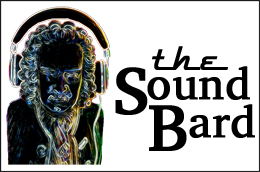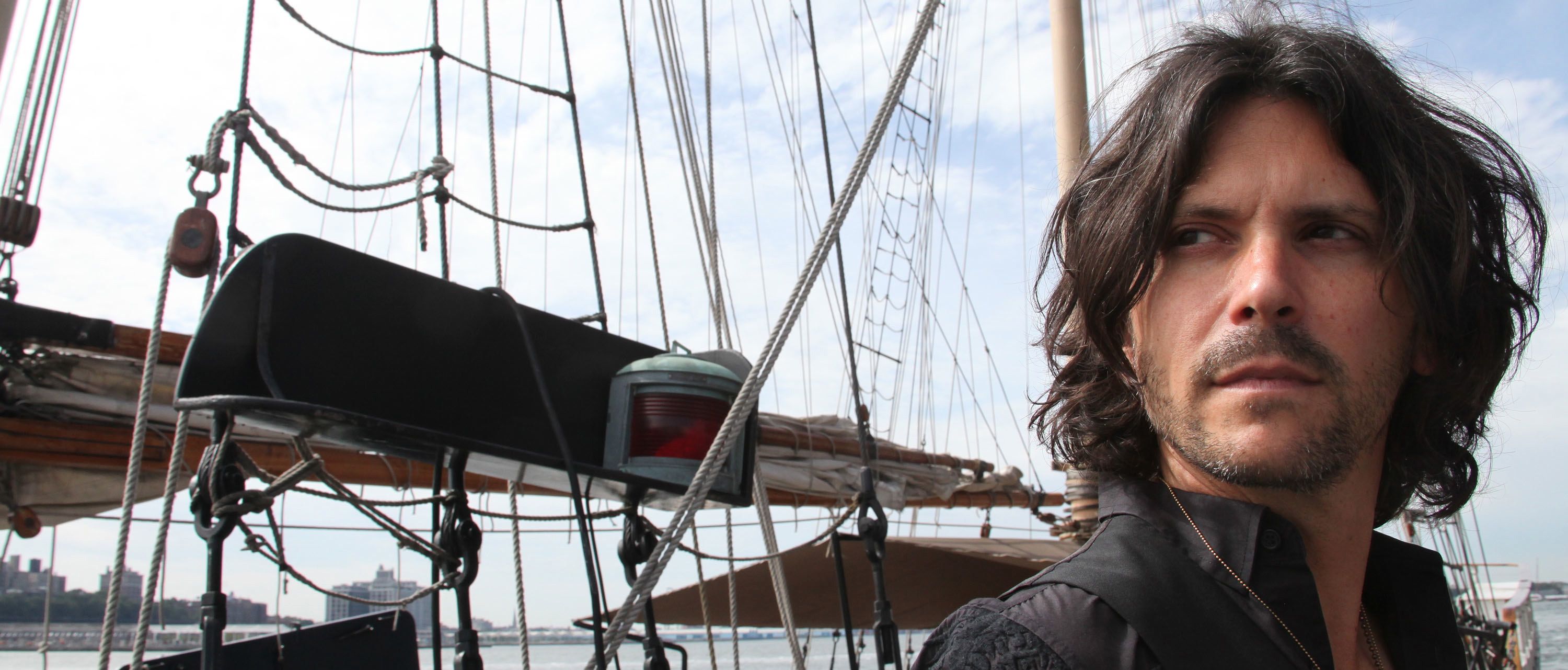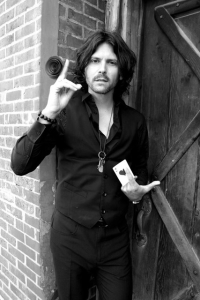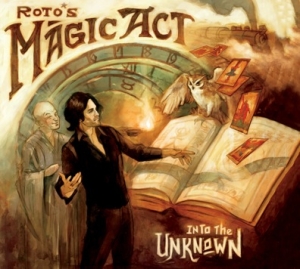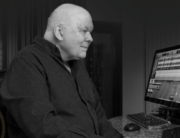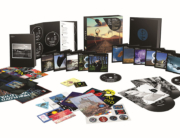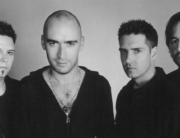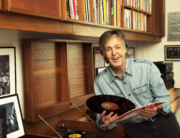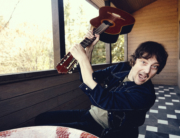BY JAMES ROTONDI — AUGUST 13, 2014
From The SoundBard’s desk: When my good friend James “Roto” Rotondi asked me if he could pen a series of essays about how to get great sound and what comprises great recordings for posting right here on The SoundBard, I immediately said, “Bring it on, brother!” Roto and I go back to the halcyon days of his being an editor at Guitar Player magazine, and he’s as accomplished, creative, inventive, and original an axslinger and composer as anyone I’ve had the privilege to know. I’ve watched him work his own band of fretboard sorcery onstage and on record for the likes of The Grassy Knoll and The Cringe, and now he’s truly come into his own with Roto’s Magic Act and their debut release, Into the Unknown (Volumnia Recordings/Zen Easy Music). From the beautiful acoustic-twang gallop of “Hearts in Flight” — wherein Roto and the gang soar like a modern-day Flying Burrito Brothers — to the insistent, catchy squall of “Hot News,” Into the Unknown is one of the most magical listening experiences you’ll have this year, or any other. Take it away, Roto! —MM
It was a book, not a record, in the end that inspired me to go beyond what I’d ever attempted in the studio before, and make an album that I hoped would be my very own grand statement in the ambitious tradition of The Beatles’ Sgt. Pepper’s Lonely Hearts Club Band and Pink Floyd’s The Dark Side of the Moon. And, yes, if that meant I might find myself orbiting Planet Pretension just a bit (or, hell, landing on it and setting up a colony!), I’d decided that was okay. I figured I couldn’t possibly take myself more seriously than, say, Roger Waters, and even if I couldn’t ever create a milestone close to what Floyd and The Beatles had done, I’d learn plenty by modeling my record after those masterpieces. If anything, I knew the experience would be humbling.
Shooting for the Moon
Like those amazing records, Into the Unknown would be a continuous sound journey, a collection of diverse songs married together by sound effects, ambient atmospheres, and random voices, suggesting a hidden story arc or a radio play. Indeed, the book that made me start thinking in this direction was The Dark Side of the Moon: The Making of the Pink Floyd Masterpiece, by John Harris, a truly insightful book that covered everything from Waters’ Socialist upbringing to David Gilmour’s cutting tone recipes on solos like “Time” and “Money.” [This tome is also SoundBard-approved—MM] Of course, it talks plenty about the sound of Dark Side, how by simply using room sounds and one single plate reverb, engineer Alan Parsons was able to create one of the loveliest stereo images ever recorded.
Thanks to a weekly songwriting club I’d been a part of for 2 years, I had over 100 songs written when I started my album — though many would be augmented with new bridges, solo sections, and more fleshed-out lyrics — and I was fortunate to be introduced to Brooklyn’s Trout Recording studio and producer Bryce Goggin, known for his work with Spacehog, Phish, Apples In Stereo, and Joseph Arthur. In fact, between Trout’s great collection of vintage analog gear and modern digital plug-ins, I’d have infinitely more sheer audio options than The Beatles and Floyd ever did. Plus, I’d be tracking with some of the country’s best musicians, including Modern Drummer cover dudes Shawn Pelton and Matt Chamberlain. Was there any reason I shouldn’t push myself to make the kind of headphone-experience, double-gatefold vinyl-style “proper record” that had always intrigued and inspired me as a kid?
Get A Room!
I knew a few things about the sonics of both Sgt. Pepper and The Dark Side of the Moon: both were recorded at Abbey Road Studios — Pepper more or less entirely in the quite large and “live-sounding” Studio 2, and Dark Side for the most part in the even larger Studio 3, which these days is typically reserved for large orchestral sessions. (I was lucky enough to do some live recording in Studio 2 myself earlier this year, with a different project, The Cringe, and left there utterly blown away by just how critical the room sound there is to all those Beatles records; I will never hear “Love Me Do,” “Tell Me Why,” or even “With a Little Help From My Friends” the same way again.) I may not have had Abbey Road at my disposal for my album, but Trout boasts a distinctive sound of its own, and Bryce’s insistence on live tracking for the basic band parts meant that both the energy of a live group and the unique characteristics of the space would be captured. Sometimes, an obsession with sonic purity and separation can lead to fairly sterile tracks; that would not be the case here, at least if Bryce could help it.
What’s more, we’d be recording all the basic tracks to 2-inch tape — that’s right, real, old-school magnetic tape, which as Bryce explains, “has a profound effect on the color and dynamics of the recordings.” He’s not kidding. The first track we started cutting was the album’s opener, “Circus Clown,” and it’s a good example of the different sonic ideas we were juggling. The song begins and ends with some fun live circus ambience that I bought from a sound effects company, with my own voice overlaid as the “ringleader,” and it boasts a drum sound that, while not overly roomy, could only be produced in a good-sized room, with a good pair of overhead mics — a pair of Cole 4038s, specifically — for an audio “picture” that has real dimension, and translates into you “seeing” a real space when you listen to your stereo. (We’ll get to Eddie Jackson’s equally excellent mix work in the next installment, but suffice it to say that finding the sweet spot between a “hot” mix and a clear, unmuddied one is an audio engineer’s greatest balancing act!)
Check out “Circus Clown” above, and listen for the drum imaging, as well as for the panning and balance of dry sounds and reverby sounds that help create a “sonic stage,” so that you the listener can hopefully both hear and “see” where the instruments and parts are placed in the stereo spectrum. I have to confess that many modern records seem so intent on being the loudest and the most compressed, that the kind of “imaging” I’m talking about is largely lost; you need what audio engineers call “headroom” to really hear things like a room sound, and too many modern rock records are all about the sheer crunch. Having said that, bands like The Black Keys still seem to be shooting for that cinematic quality that so many of those great ’60s and ’70s records had — and it’s an audio ambition that I certainly think is well worth pursuing.
James Rotondi is the guitarist and singer for Roto’s Magic Act, as well as a member of the groups Spy Empire, Hundred Hounds, The Cringe, The Grassy Knoll, and Trilon, featuring Santana’s Michael Shrieve. He is a former member of the bands Mr. Bungle and Air (French Band), and a contributing writer for The Huffington Post. Find out more at www.rotosmagicact.com and www.jamesrotondi.com, and look for the new Roto’s Magic Act album Into the Unknown on iTunes, CDBaby, and other outlets. Part 2 of this series will be coming soon!
Tags: 2-inch tape, Abbey Road, Alan Parsons, Bryce Goggin, Circus Clown, David Gilmour, Into the Unknown, James Rotondi, magnetic tape, Pink Floyd, Roger Waters, Roto's Magic Act, Sgt. Pepper's Lonely Hearts Club Band, The Beatles, The Cringe, The Grassy Knoll, Trout Recording